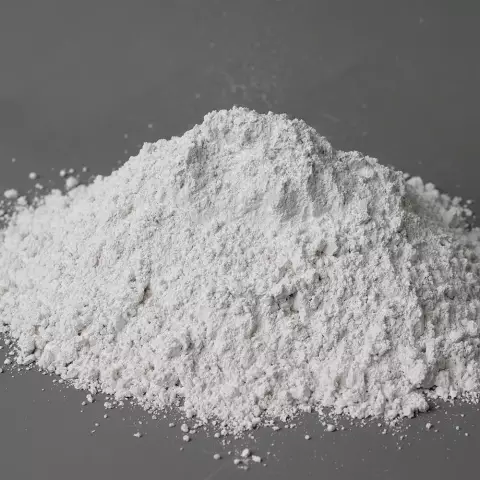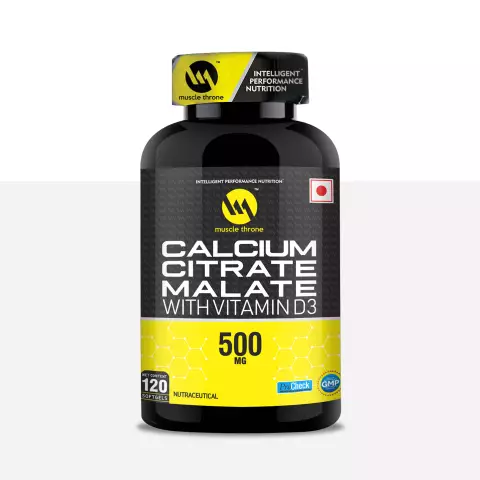- Author Rachel Wainwright [email protected].
- Public 2023-12-15 07:39.
- Last modified 2025-11-02 20:14.
Calcium folinate
Calcium folinate: instructions for use and reviews
- 1. Release form and composition
- 2. Pharmacological properties
- 3. Indications for use
- 4. Contraindications
- 5. Method of application and dosage
- 6. Side effects
- 7. Overdose
- 8. Special instructions
- 9. Application during pregnancy and lactation
- 10. Use in childhood
- 11. Use in the elderly
- 12. Drug interactions
- 13. Analogs
- 14. Terms and conditions of storage
- 15. Terms of dispensing from pharmacies
- 16. Reviews
- 17. Price in pharmacies
Latin name: Calcium folinate
ATX code: V03AF03
Active ingredient: calcium folinate (Calcium folinate)
Manufacturer: JSC "Lekhim" (Ukraine)
Description and photo update: 2019-21-01

Calcium folinate is a remedy that eliminates the toxic effects of anticancer therapy.
Release form and composition
Dosage form - solution for injection: transparent, colorless or light yellow (in yellow glass ampoules of 3 or 5 ml, in a cardboard box 5 or 100 ampoules; in a blister of 5 ampoules, in a cardboard box 1 blister and instructions for use of Calcium folinate).
Composition of 1 ml solution:
- active substance: folinic acid (in the form of calcium folinate) - 10 mg;
- auxiliary components: water for injection, sodium hydroxide, sodium chloride, diluted hydrochloric acid.
Pharmacological properties
Pharmacodynamics
Calcium folinate is the calcium salt of 5-formyltetrahydrofolic acid; an active metabolite of folic acid; an important coenzyme required for the synthesis of nucleic acids.
The drug prevents the development of toxic effects and neutralizes the action of folic acid antagonists, in particular methotrexate.
Due to the ability of calcium folinate to compete for one membrane transporter with folate antagonists, the drug stimulates the outflow of the latter. By replenishing the reduced reserve of folate in the body, the drug protects cells from the action of folic acid antagonists. Calcium folinate is a source of reduced tetrahydrofolate, therefore it can bypass the blockade of folate antagonists and serve as a source of various coenzyme forms of folic acid.
Also, calcium folinate is often used as a biochemical modulator to enhance the cytotoxic effect of 5-fluorouracil. This agent inhibits thymidylate synthase (a key enzyme involved in pyrimidine biosynthesis), and calcium folinate, by increasing the intracellular reserve of folate, enhances the inhibition process. As a result, the complex "5-fluorouracil - thymidylate synthase" is stabilized, which increases the cytotoxic activity.
Pharmacokinetics
The main pharmacokinetic characteristics of the drug:
- absorption: the systemic bioavailability of calcium folinate with intramuscular (i / m) administration of an aqueous solution and intravenous (i / m) administration is comparable, however, in the first case, the maximum plasma concentration (Cmax) is lower;
- metabolism: calcium folinate is a racemate (equimolar mixture of two enantiomers). The active enantiomer is the L-form (L-formyltetrahydrofolate, L-5-formyltetrahydrofolate), the main metabolite of folinic acid is 5-methyltetrahydrofolic acid. Biotransformation is carried out mainly in the mucous membrane of the gastrointestinal tract and in the liver;
- distribution: the volume of distribution of the drug is unknown. Cmax of the parent compound (folinic acid, D / L-formyltetrahydrofolic acid) is noted 10 minutes after IV administration. After a dose of 25 mg, the AUC (area under the concentration-time curve) of L-5-formyltetrahydrofolate and 5-methyltetrahydrofolate is 28.4 ± 3.5 mg * min / l and 129 ± 11 mg * min / l, respectively. The concentration of the inactive D-isomer is greater than that of L-5-formyltetrahydrofolate;
- excretion: about 80-90% of the dose is excreted in the urine in the form of 10-formyltetrahydrofolate and other inactive metabolites, about 5-8% of the dose is excreted in the feces. The half-life (T 1/2) of the active enantiomer (L-form) is 32-35 minutes, of the inactive (D-form) - 352-485 minutes. T 1/2 of active metabolites with intravenous and intramuscular administration is approximately 6 hours.
Indications for use
In adults, Calcium folinate is used in the following cases:
- treatment of megaloblastic anemia caused by folic acid deficiency;
- treatment and prevention of folate deficiency in the absence of the possibility of taking folic acid by mouth;
- prevention of the toxic effect of methotrexate (when used in medium and high doses) - as a protective agent;
- overdose and intoxication with methotrexate or other folic acid antagonists - as an antidote;
- combined cytotoxic therapy with 5-fluorouracil - as a biochemical modulator of the activity of an antitumor agent.
For children, the drug is prescribed in the following cases:
- prevention of the toxic effect of methotrexate - as a protective agent;
- overdose and intoxication with methotrexate or other folic acid antagonists - as an antidote.
Contraindications
- anemia due to vitamin B 12 deficiency, including pernicious anemia;
- known intolerance to any component of the drug.
Calcium folinate, instructions for use: method and dosage
Calcium folinate solution is intended for intramuscular (i / m) and intravenous (i / v) administration. Intrathecal (endolumbar) application of the solution is strictly prohibited. The maximum rate of intravenous administration is 160 mg / min.
Infusion solutions are prepared by diluting Calcium folinate with 0.9% sodium chloride solution or 5% glucose solution.
The drug is used for the treatment of megaloblastic anemia associated with a deficiency of folic acid, as well as for the therapy and prevention of folate deficiency in cases when oral administration of folic acid is impossible or for some reason ineffective, for example, in patients on parenteral nutrition or with severe malabsorption syndrome …
All doses are quoted as folinic acid.
Calcium folinate protection in methotrexate therapy
Conducting kaltsiumfolinatnoy protection expedient when assigning methotrexate at doses of 100-500 mg / m 2 body surface (n. M.) And is necessary when methotrexate doses greater than 500 mg / m 2 p. M.
Calcium folinate dosage regimens depend on the methotrexate regimens, therefore, the protocol of treatment with this drug should be consulted for appropriate information.
Calcium folinate is parenterally administered to patients with malabsorption syndrome and other diseases of the gastrointestinal tract, when intestinal absorption of the drug is not guaranteed. If doses of more than 25-50 mg are required, the drug should always be administered only intravenously or intramuscularly, while taking into account the saturation effect during absorption in the digestive tract.
Recommendations for the dosage regimen are given for adult patients (including the elderly) and children.
The optimal doses and duration of calcium folinate protection are determined primarily depending on the doses and treatment regimens with methotrexate, individual indicators of methotrexate excretion and the presence of symptoms of its toxic effect. Calcium folinate is usually administered at 15 mg / m 2 n. T. (6 to 12 mg / m 2 p. M.) After 12-24 hours (within 24 hours) after the start of infusion of methotrexate. Over the next 72 hours, Calcium folinate is administered in the same doses every 6 hours. After several parenteral administrations, the patient can be switched to folinic acid in an oral dosage form.
48 hours after the start of the methotrexate infusion, its residual concentration in the blood is measured. If it is less than 0.5 μmol / L, the administration of folinic acid is stopped. If more than 0.5 μmol / L, protective therapy is continued and intensified. Calcium folinate solution is injected every 6 hours for another 48 hours or until a residual methotrexate concentration of <0.05 μmol / L is reached.
Recommended doses of folinic acid depending on the concentration of methotrexate:
- ≥ 0,5 mmol / l - 15 mg / m 2 n T.;.
- ≥ 1,0 pmol / L - 100 mg / m 2 n T.;.
- ≥ 2,0 pmol / L - 200 mg / m 2 n t..
In addition to calcium folinate protection, the behavior of measures aimed at accelerating the excretion of methotrexate, such as alkalizing urine and maintaining a high urine output, is required. It is necessary to monitor kidney function and determine the level of creatinine daily.
Use of calcium folinate as an antidote to folic acid antagonists
Recommended dosage depending on the indication:
- prevention of the toxic effects of pyrimethamine (during therapy with high doses or long-term treatment with low doses): calcium folinate is prescribed simultaneously at 5-50 mg per day, depending on the number of corpuscles in the peripheral blood;
- prevention of toxic effects of trimethoprim: after its cancellation, folinic acid is administered in a daily dose of 3-10 mg until the normalization of hematological parameters;
- prevention of toxic effects trimetrexate: calcium folinate is administered in / 20 mg / m 2 n m for 5-10 minutes every 6 hours (daily dose - 80 mg / m.. 2 n r..) daily in the period of application and trimetrexate within 72 hours after the introduction of its last dose. Depending on the symptoms of hematological toxicity of trimetrexate, the dose of folinic acid may be adjusted;
- treatment of trimetrexate overdose (possible when used in doses of more than 90 mg / m 2 p.t. without the concomitant appointment of Calcium folinate): folinic acid is administered after the cancellation of trimetrexate IV at 40 mg / m 2 p.t. every 6 hours for 3 days.
Combination therapy in combination with 5-fluorouracil
There are several different regimens for 5-fluorouracil in combination with calcium folinate, but the benefit of one or the other has not been proven.
There is no information on therapy in children. Some therapeutic regimens for adults and elderly patients with metastatic or advanced colorectal cancer:
- Scheme 1 with repetition rates once a week: calcium folinate is administered / v bolus dose of 20 mg / m 2 n T or as a 2-hour infusion at a dose of 200-500 mg / m.. 2 n T.;. 5-fluorouracil is administered on / in a bolus dose of 500 mg / m 2 n t in the middle or at the end of infusion calcium folinate..;
- Scheme repetition rate every 2 weeks: first 1-2 days of folinate calcium is administered at 200 mg / m 2 n into an infusion duration of 2 hours and then - 5-fluorouracil 400 mg / m.. 2 n t.. in the form of an i / v bolus injection and 5-fluorouracil at a dose of 600 mg / m 2 p.t. in the form of an infusion lasting 22 hours;
- scheme with repetition of courses 1 time per month: calcium folinate is administered daily in the first 5 days at 20 mg / m 2 p.t. IV bolus or 200-500 mg / m 2 p.t. in the form of a 2-hour infusion immediately after the introduction of calcium folinate begin bolus of 5-fluorouracil at a dose of 370 or 425 mg / m 2 p. m.
The required number of courses is determined by the doctor.
When carrying out combination therapy, it may be necessary to adjust the doses of 5-fluorouracil and change the intervals between its injections, depending on the response to treatment, the patient's condition, types and severity of dose-limiting toxic effects. Detailed recommendations are given in the instructions for use of 5-fluorouracil. Changing the dosage regimen of calcium folinate is not required.
Side effects
Known adverse reactions by frequency of development are classified as follows: very often - ≥ 1/10 cases, often - from ≥ 1/100 to <1/10, infrequently - from ≥ 1/1000 to <1/100, rarely - from ≥ 1 / 10000 to <1/1000, very rarely - <1/10000.
Possible side effects regardless of the indication for the use of Calcium folinate:
- from the immune system: very rarely - allergic reactions, including urticaria, anaphylactoid reactions;
- from the digestive tract: rarely when using the drug in high doses - gastrointestinal disorders;
- from the nervous system and psyche: rarely - an increase in the frequency of epileptic seizures; very rarely when using the drug in high doses - agitation, insomnia, depression;
- others: rarely - fever.
Side effects when combining Calcium folinate with 5-fluorouracil
The safety profile of therapy in general depends on the scheme of 5-fluorouracil use, since calcium folinate increases its toxicity.
With a treatment regimen with weekly administration of drugs, the development of reactions from the digestive tract is possible: very often - dehydration and severe diarrhea, requiring hospitalization, since in some cases it can lead to death.
With a monthly drug regimen, the following side effects are possible:
- from the digestive system: very often - nausea, vomiting;
- others: very often - severe inflammation of the mucous membranes.
Neurotoxicity and other toxic effects of 5-fluorouracil Calcium folinate does not enhance.
Overdose
When using excessive doses of calcium folinate, no negative effects were noted. However, it should be borne in mind that in too high doses, the drug is able to neutralize the chemotherapeutic effect of folic acid antagonists.
In case of an overdose while using a combination of 5-fluorouracil and calcium folinate, measures are required to eliminate the symptoms of an overdose of 5-fluorouracil.
special instructions
Before using Calcium folinate, you should visually inspect the drug for changes in the color of the solution, turbidity, or the presence of visible mechanical impurities. If the solution is changed, it cannot be used.
Opened ampoules cannot be stored.
The use of calcium folinate in combination with 5-fluorouracil or methotrexate should be carried out under the close supervision of an experienced oncologist.
Calcium folinate may mask the clinical signs of vitamin B 12 deficiency anemia.
In patients with epilepsy receiving primidone, phenytoin, phenobarbital or succinamides, calcium folinate therapy may increase the frequency of epileptic seizures due to a decrease in the plasma concentration of antiepileptic drugs. Such patients during the period of treatment with Calcium folinate and after its cancellation require monitoring of the concentration of anticonvulsant substances in the plasma and correction of their doses.
Many cytotoxic drugs that are direct or indirect inhibitors of DNA synthesis (in particular, mercaptopurine, cytarabine, thioguanine, hydroxycarbamide) cause macrocytosis. In this case, the use of folinic acid is impractical.
Calcium folinate in combination with methotrexate
Recommendations for the prevention of toxic effects are indicated in the instructions for medical use of methotrexate.
During therapy with methotrexate, Calcium folinate does not have a protective effect against toxic effects of a non-hematological nature, for example, from nephrotoxic effects due to the precipitation of methotrexate and / or its metabolites in the renal tubules.
It is not recommended to use folinic acid in excessive doses, since this can reduce the antitumor activity of methotrexate, especially in tumors of the central nervous system, in which, after several courses of treatment, the accumulation of calcium folinate is noted.
Patients who have a delayed elimination of methotrexate in the early phase are at increased risk of toxic effects. Renal failure developing with the use of methotrexate or existing before the start of therapy is associated with a delay in the elimination of methotrexate. In such cases, longer use of calcium folinate or higher doses may be required.
In case of an overdose of methotrexate or other folic acid antagonists, calcium folinate administration should be started as soon as possible. The longer the interval between injections of methotrexate and calcium folinate, the lower the effectiveness of the latter.
If resistance to methotrexate develops due to impaired membrane transport, resistance to folinic acid also develops, since both substances are carried by the same system.
Patients with laboratory abnormalities or symptoms of toxicity should always be checked which medications they are still taking. It is possible that these drugs interact with methotrexate, for example, affect its binding to plasma proteins or excretion.
Calcium folinate in combination with 5-fluorouracil
With combination therapy, monitoring of calcium levels is necessary. If necessary, calcium preparations are prescribed in the complex treatment.
Calcium folinate may increase the toxic effect of 5-fluorouracil, especially in elderly and debilitated patients. The most common manifestations are: diarrhea, stomatitis, inflammation of the mucous membranes, leukopenia. These effects can be dose-limiting. If toxic reactions require dose reduction, the dose of 5-fluorouracil should be reduced with combination therapy more than with 5-fluorouracil monotherapy.
Treatment with 5-fluorouracil in combination with calcium folinate should not be started / continued until the symptoms of gastrointestinal toxicity have completely disappeared, regardless of their severity. Diarrhea can lead to a rapid deterioration of the patient's condition, up to and including death. Therefore, patients with diarrhea require careful medical supervision until the condition is completely normalized. Particular care should be taken when treating elderly and debilitated patients.
For the elderly and patients who have previously received radiation therapy, 5-fluorouracil is recommended to be prescribed in lower doses.
Influence on the ability to drive vehicles and complex mechanisms
There is no data.
Application during pregnancy and lactation
There is no evidence of a negative effect of calcium folinate on the developing fetus. However, adequate studies have not been conducted in pregnant women. In this regard, the drug during pregnancy can be used only in cases where the expected benefit is definitely higher than the possible risks.
There are no restrictions on the use of calcium folinate to prevent the development of side effects of methotrexate or neutralize its toxic effects.
The use of 5-fluorouracil is contraindicated during pregnancy and lactation, therefore calcium folinate in combination with 5-fluorouracil is not prescribed.
See the instructions for use for 5-fluorouracil, methotrexate, and other folate antagonists for details on restrictions.
Whether calcium folinate penetrates into mother's milk is unknown. Therefore, the appropriateness of therapy during lactation is determined by the attending physician.
Pediatric use
Calcium folinate is used in pediatric practice according to indications.
Use in the elderly
In elderly patients, the drug should be used with caution, under the supervision of a physician.
Drug interactions
A solution of calcium folinate is incompatible (precipitation occurs) when mixed with solutions of methotrexate, foscarnet and droperidol. Do not mix the drug with other drugs.
Calcium folinate can reduce the effect and even completely neutralize the effect of folic acid antagonists (for example, pyrimethamine and co-trimoxazole).
The drug enhances the effects of 5-fluorouracil, both therapeutic and toxic.
Calcium folinate reduces the therapeutic effect of antiepileptic drugs (such as succinimides, phenytoin, primidone, phenobarbital), which may increase the frequency of epileptic seizures.
Analogs
Calcium folinate analogs are Leucovorin, Leucovorin-Lance, Leucovorin-Teva, Dalizol, Calcium folinate Ebeve, Mesna, Uromitexan, Sodiofolin, Natriofolin Medak, etc.
Terms and conditions of storage
Store in original packaging at 2-8 ° С. Keep out of the reach of children.
Shelf life is 2 years.
Solutions diluted with 0.9% sodium chloride solution or 5% glucose solution retain physical and chemical stability for at least 24 hours if stored at temperatures up to 25 ° C.
From a microbiological point of view, after dilution, the infusion solution must be injected immediately. If it has not been used, the conditions and duration of storage should be monitored by medical personnel. In the case when the solution is not prepared under certified and controlled aseptic conditions, the maximum storage time is 24 hours, subject to a temperature regime of 2-8 ° C.
Terms of dispensing from pharmacies
Dispensed by prescription.
Reviews about Calcium folinate
There are no reviews of Calcium folinate on specialized medical forums and sites. The drug is used in a hospital setting, mainly as part of complex therapy, which is probably why patients do not have the opportunity to assess the effectiveness of this particular drug.
Price for Calcium folinate in pharmacies
At the moment, the price of Calcium folinate is unknown due to the lack of the drug in pharmacies. The approximate cost of some analogues:
- Calcium folinate Ebeve - 634 rubles. for a package of 5 ampoules of 3 ml 10 mg / ml;
- Leucovorin-Lance - 956 rubles for a package of 5 ampoules of 5 ml 10 mg / ml;
- Natriofolin Medak - 1625 rubles for 1 bottle 2 ml 50 mg / ml;
- Uromitexan - 1,733 rubles per package of 15 ampoules of 2 ml 10 mg / ml.

Anna Kozlova Medical journalist About the author
Education: Rostov State Medical University, specialty "General Medicine".
Information about the drug is generalized, provided for informational purposes only and does not replace the official instructions. Self-medication is hazardous to health!






